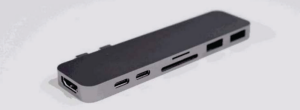by Dennis Crouch
This is just a first look at how overturning Chevron may impact patent practice.
In the past, both the USPTO and patent attorneys have largely ignored the larger scope of administrative law, but in recent years USPTO operations have been under tighter control from the White House, and courts have increasingly asked whether the agency is following the rules. Administrative patent law was truly launched with the American Invents Act of 2011 and the resulting administrative patent trials by the PTAB -- resulting in hundreds of appeals arguing that the USPTO's procedural approach is an abuse of administrative power. Importantly, the Supreme Court in Cuozzo Speed Techs. v. Com. for Intell. Prop., 579 U.S. 261 (2016) provided the patent office with Chevron deference for its determinations regarding AIA trials, including issues such as its approach to claim construction. But Chevron has now been overruled, and many are wanting the Federal Circuit to revisit the USPTO approach.
Although I expect that the outcome
